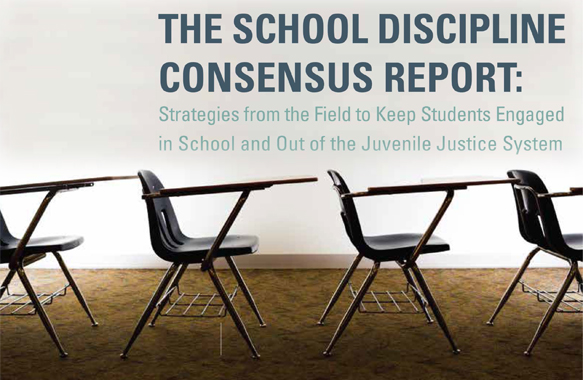Have you ever said, did, or been something that got you in trouble? If not as an adult perhaps, at the age of four you hugged a teacher. Might that be a crime? Surely, this act merits a school suspension. It is so cruel. But it cannot compare with what is unbearable – a two-year-old violated a school rule. How dare the child’s father, father Randy Murray give his daughter a cheese sandwich to eat before daycare. Did he not anticipate a three-day suspension? Probably not. At times, we cannot imagine what goes on in our children’s schools.
Even the students who spend most of their daytime hours navigating the halls and immersed in reminders of classroom rules find themselves in contention…Ten-year-old Nathan Entingh doesn’t understand why he was suspended. The fifth-grader was in science class, admittedly “goofing around” and then it happened, the teacher took him out of the classroom, saying he would be suspended from school. The educator, school administrators, and the state adhere to zero-tolerance policies. Raising one’s thumb, while pointing a forefinger, cannot be forgiven. Making any motion that is reminiscent of a gun, results in a three-day suspension from school. That is for a first offense. Do not do another.
Be alerted. Violations are not few. Consider the current dress codes. Piercings, large belt buckles, untucked shirts, different colored jackets a T-shirt with words that might be deemed offensive. You too could be among the More Than 160 Texas Students Suspended For Dress Code Violations. And don’t be More Than 160 Texas Students Suspended For Dress Code Violations >tardy. That too may qualify as grounds for suspension. The question is, what is a child to do? Perhaps our youth can do nothing. Every thing they do seems to take them out of their school. Thus, we have to answer another question. What might adults do to encourage discipline practices that ameliorate the punitive policies?
Schools Get Road Map For Improving Discipline Practices
A national report described as a first-of-its-kind road map for improving discipline practices in U.S. public schools was released Tuesday, with 60 recommendations intended to help schools reduce suspensions and create better learning conditions.
The 460-page report, the result of a three-year, bipartisan effort, urges that suspensions be used as a last resort, proposes targeting support to help students with behavioral issues and suggests specialized training for police officers on the nation’s campuses.

A national report urges that suspensions be used as a last resort in the nation’s schools and proposes targeting support to help students with behavioral issues. Read it
“What we have now is a comprehensive vision from the field,” said Michael Thompson, director of the Council of State Governments Justice Center. “I think this a breakthrough development.”
The findings come as a bookend to a landmark Texas study in 2011 that followed nearly a million school children for six years or more and found that almost 60 percent of secondary students had been suspended or expelled at least once. The study’s authors said the research documented the impact of zero-tolerance practices in public schools.
Following the Texas study, federal officials stepped up their focus on harsh discipline measures in schools and issued the first set of national guidelines earlier this year, highlighting racial disparities in punishments. The federal attention came amid a broader rethinking of discipline nationally, with changes debated by states and school districts from Colorado to Maryland.
The report’s findings will be presented at events this week in Texas and California, states where suspension rates have dipped and efforts have been made to change policy or law, the authors said. Texas has seen a 28 percent drop in expulsions and a 9 percent dip in overall suspensions since 2011.
Thompson and others emphasize a need for both fewer suspensions and more classroom engagement for all students.
“Just driving down suspensions in and of themselves is not success,” Thompson said. The goal is to shift from a reactive to a preventive approach to student misbehavior, not to tolerate greater levels of disruption in U.S. classrooms, he said.
Texas state Sen. John Whitmire (D), who chaired the national consensus project, said he hoped the report would touch off change in states and local districts. In a Texas high school, he said, administrators recently sent 170 students home for dress-code violations.
“I appreciate dress codes, but do you have to send them all home?” Whitmire said. “Suspensions and expulsions ought to be the very last resort.”
Millions of U.S. students are suspended each year for minor misconduct, with increased risks of losing ground academically, dropping out and entering the juvenile justice system, the report says. Students most affected are nonwhite, disabled, or lesbian, gay, bisexual or transgender.
The 60 recommendations for change cover a number of topics and suggest that suspension be used only after taking other steps: peer conferences, referrals to support teams and restorative practices that help make up for harms done. The report cites the need for a graduated response to disciplinary problems, as well as partnerships between educators, police and court officials.
One of the project’s advisers, Karen Junker, a teacher in San Rafael, Calif., who coordinates school culture and climate programs, said that restorative practices led to a steep drop in suspension rates at her middle school over a four-year period. The school also saw a marked increase in academic performance.
The report said school-based police should not be used to address issues of classroom management and need proper training, supervision and evaluation. It pointed to Denver as a city where school leaders and police have worked well together.
Darrel W. Stephens, executive director of the Major Cities Chiefs Association and also a project adviser, said the report’s guidance would be useful for communities in determining whether police presence is needed in schools.
“I think there is a consensus that following the recommendations in this report would make a difference in the lives of all children,” Stephens said.
The report focused on court referrals, too, and recommended measures for cutting back on referrals for minor infractions. Authors say that the report is a comprehensive catalogue of ideas and that schools are not expected to adopt them all at once.












Leave A Comment